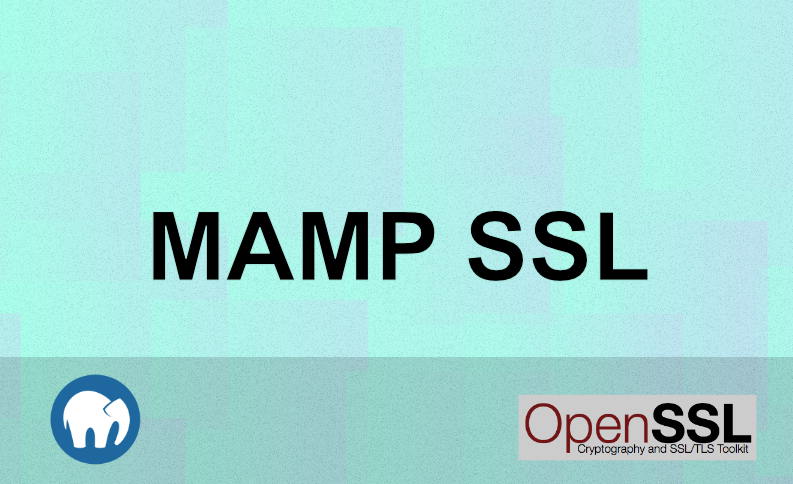
Settings up a local web host/server on a iMAc is not that hard nowadays, Apple even ships with a built in server, if you want. Those of you that installed MAMP but opted out of MAMP Pro, may find them self in need of a SSL setup for local development. Or just because we can. Now MAMP is not supposed to be able to that. But we have a small/intermediate tutorial for you that just does that. Keep in mind this will be a self signed certificate. So lets get in on, but first things first:
Make a backup of your files!
So now that you have done creating a backup of your files here are the steps involved:
1. Navigate to your home folder
We will need a folder to hold those SSL files we will be generating our self
cd ~
2. Check if you have a ssl folder, if not then create one with
mkdir ssl
3. Then first create a v3.ext file
authorityKeyIdentifier = keyid, issuer basicConstraints = CA:FALSE keyUsage = digitalSignature, nonRepudiation, keyEncipherment, dataEncipherment subjectAltName = @alt_names [alt_names] DNS.1 = localhost
4. Next we create a server.csr.cnf file
[req] default_bits= 2048 prompt= no default_md= sha256 distinguished_name = dn [dn] C = NL ST = UT L = Utrecht O = End Point OU = Testing Domain emailAddress = yourname@yourdomain.com CN = localhost
5. Now we need to issue a few commands on the commandline
#From the commandline navigate to ~/ssl folder and execute these commands #Make sure you create your server.csr.cnf and your v3.ext files first inside the same folder #generate a private key #This will ask you for a passphrase(password) do NOT lose this file or the password openssl genrsa -des3 -out ~/ssl/rootCA.key 2048 #root certificate openssl req -x509 -new -nodes -key ~/ssl/rootCA.key -sha256 -days 1024 -out ~/ssl/rootCA.pem #private key for the certificate (server.key) openssl req -new -sha256 -nodes -out server.csr -newkey rsa:2048 -keyout server.key -config <(cat server.csr.cnf) #server.crt openssl x509 -req -in server.csr -CA ~/ssl/rootCA.pem -CAkey ~/ssl/rootCA.key -CA createserial -out server.crt -days 500 -sha256 -extfile v3.ext #check what we have done so far openssl x509 -text -in server.crt -nooutt
6. Then we start editing out httpd.conf files
#BACKUP YOUR FILES FIRST #EDITS FOR httpd.conf #1. Uncomment these lines LoadModule ssl_module modules/mod_ssl.so Include /Applications/MAMP/conf/extra/httpd-ssl.conf #2. Change ServerName value ServerName localhost:443 #EDITS FOR httpd-ssl.conf #3. Uncomment Listen 443 #4. Edit VirtualHost opening tag &amp;amp;amp;amp;lt;VirtualHost *:443&amp;amp;amp;amp;gt; #5. Inside VirtualHost edit these lines DocumentRoot "/Applications/MAMP/htdocs" ServerName localhost:443 SSLEngine on #6. Add/Uncomment/Edit the two certificate lines SSLCertificateFile "/Users/YOURUSERNAME/ssl/server.crt" SSLCertificateKeyFile "/Users/YOURUSERNAME/ssl/server.key"
7. Now we are going to add our public key to the keychain
Drag your .pem file to the window and make sure to set it to always trust
8. Now shutdown MAMP and try to restart.
Most likely this will not work right away.
Notes
After some fiddling I came up with the next few things
make sure the DocumentRoot in httpd-ssl.conf is correct
it should read:
DocumentRoot “/Applications/MAMP/htdocs”
in some MAMP configurations the path is wrong and reads:
First time starting with MAMP might fail:
Try starting it with
sudo /Applications/MAMP/Library/bin/apachectl start
After these settings and changes i was able to access my sites on localhost with
https://localhost/